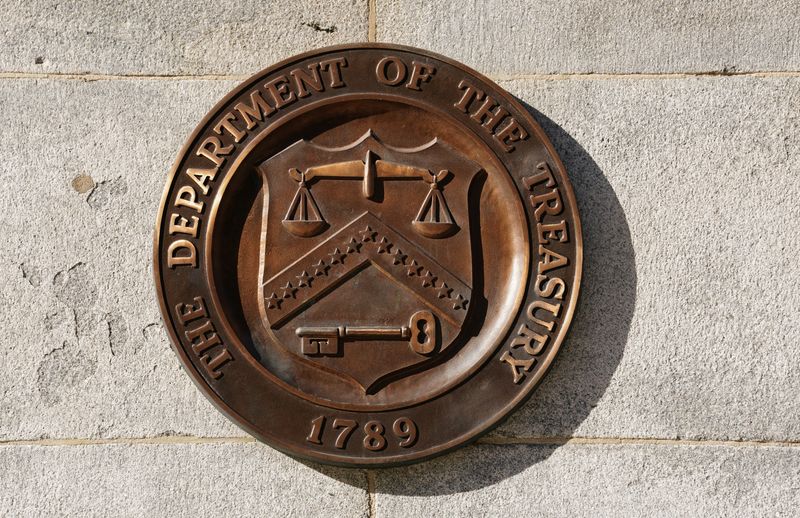By Karen Brettell
(Reuters) - The U.S. Treasury Department this week is likely to announce that it will offer fewer Treasury bills in the second quarter, after hitting its statutory borrowing limit.
Any new indications over whether the Treasury could employ Treasury buybacks, or make changes to its auction schedule for some notes, will also be a focus of interest as market participants grapple with the best ways to improve liquidity in the $24 trillion Treasuries market.
U.S. Treasury Secretary Janet Yellen activated a second extraordinary cash management measure on Tuesday, after previously warning that the Treasury could run out of funds in early June if the U.S. Congress does not approve an increase in the $31.4 trillion debt ceiling.
Analysts expect the U.S. government could finance itself through July or even October, but there is much uncertainty and how long it can last may depend on proceeds from this year’s tax season.
Next week, the Treasury is likely to say that it will reduce its issuance of Treasury bills, debt that matures in one year or less, and run down its cash balance to buy more time.
“Bill issuance is going to come down quite a bit in Q2. ... They have to incorporate the debt ceiling into their financing estimates at this point,” said Angelo Manolatos, a macro strategist at Wells Fargo (NYSE:WFC).
The Treasury will give its financing estimate for the coming quarter on Monday and offer more details on its funding strategy on Wednesday.
It may also indicate that it will do more than reverse cuts in bill issuance when an agreement to increase the debt ceiling is reached, and a flood of the debt is expected to hit the market.
That is because the U.S. government wants to increase bills as a percentage of overall debt to meet its long-term goals.
“It’s trying to build up bill supply, which got too low last year when Treasury was facing smaller deficits on the back of the pandemic spending,” said Meghan Swiber, U.S. rates strategist at Bank of America (NYSE:BAC).
IMPROVING LIQUIDITY
Analysts and market participants will also be watching to see whether the Treasury indicates that it will adopt proposals meant to improve liquidity, which it has queried dealers about over the last few quarters.
In the last survey, Treasury asked if it should change auctions schedules for two-, three-, five- and seven-year notes to include reopenings, as is common with longer-dated debt.
This could increase liquidity and concentrate more trading in larger “on-the-run” issues, but that would come at the expense of “off-the-run” debt, said Benjamin Jeffery, an interest rate strategist at BMO Capital Markets.
So-called “on-the-runs” are the most recent and liquid issues, while older “off-the-run” bonds have suffered the most liquidity problems when market conditions worsen.
Having larger two-year note issues could reduce the number of times the notes trade “special” in the repurchase agreement market, said Manolatos, which occurs when there is a shortage of notes to borrow.
On the other hand, it could also require more active risk management by investors because three months between issues, assuming two reopenings, is a large duration change for a relatively short maturity.
“Two months later a two-year doesn’t have the same duration,” Manolatos said.
BofA’s Swiber said that Treasury buybacks, which the Treasury queried dealers about in a previous survey, are a better solution to boost liquidity during times of market stress.

These “allow Treasury to more directly manage Treasury liquidity, to more directly manage the outstanding supply of securities and they can effectively buy back things that are cheap on the curve and help support liquidity in the more liquid parts of the curve as well,” she said.
An improving liquidity outlook with less uncertainty over Federal Reserve policy relative to last year and more balanced supply and demand dynamics makes this issue less urgent, however, so while the Treasury may include a discussion on possible buybacks, it is unlikely to make a formal announcement next week, Swiber said.